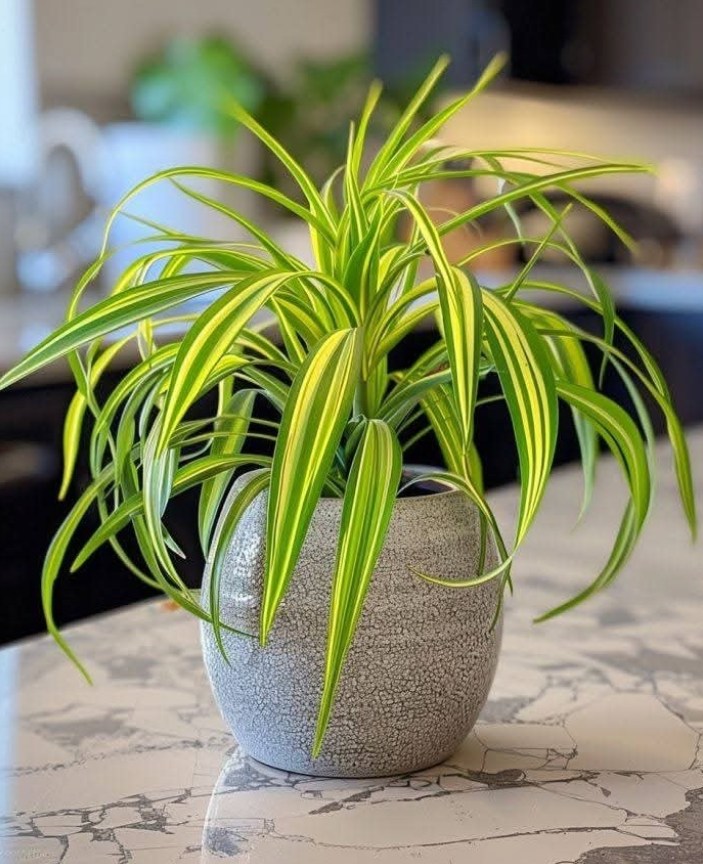Healthy spider plant
Sharp scissors or pruning shears
Well-draining potting mix (preferably with perlite or sand)
Balanced liquid fertilizer (10-10-10 or 20-20-20)
Bright, indirect light source
Watering can
Properly sized pot with drainage holes
Preparation (7 Tips to Encourage Bushier Growth)
Trim Leggy Leaves & Old Runners
Regular pruning stimulates new leaf growth. Cut back long, spindly leaves and old plantlets (baby spiders) to encourage fullness at the base.
Propagate and Replant Plantlets
Take a few healthy spiderettes and plant them back into the same pot. This instantly creates a denser look and promotes more root mass.
Use the Right Pot Size
Spider plants like to be slightly root-bound, but an overly cramped pot can limit growth. Repot only when roots are bursting through, and choose a pot just 1–2 inches wider than the previous one.
Bright, Indirect Light Is Key
Too little light = leggy growth. Too much = scorched leaves. Keep your plant near a north or east-facing window, or under grow lights for bushier, balanced growth.
Feed Monthly During Growing Season
Use a balanced, water-soluble fertilizer once a month during spring and summer. This encourages strong, lush foliage and boosts plantlet production.
Keep Soil Moist — But Not Soggy
Spider plants hate overwatering. Water when the top 1–2 inches of soil are dry, and never let the pot sit in water. Consistent moisture without sogginess promotes healthy roots.
Increase Humidity for Lush Growth
Dry air can lead to brown leaf tips. Mist the leaves occasionally or place the pot on a humidity tray to mimic a more tropical environment.
continued on next page.
